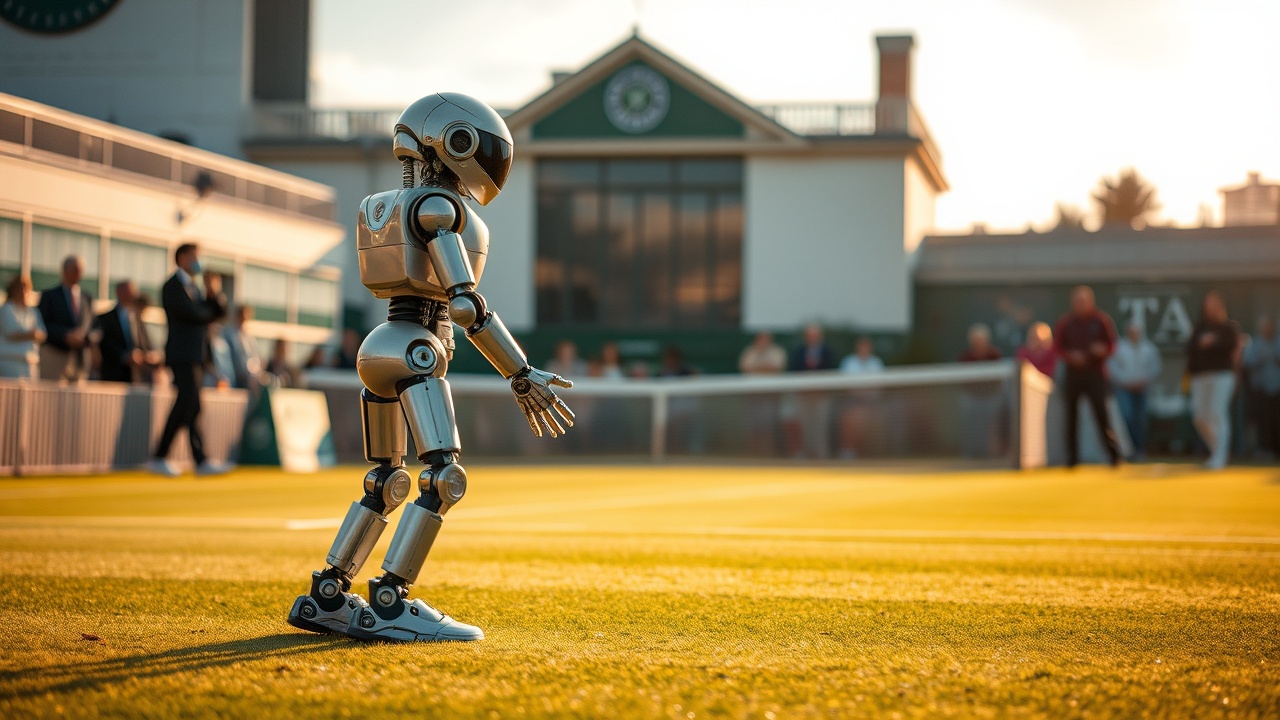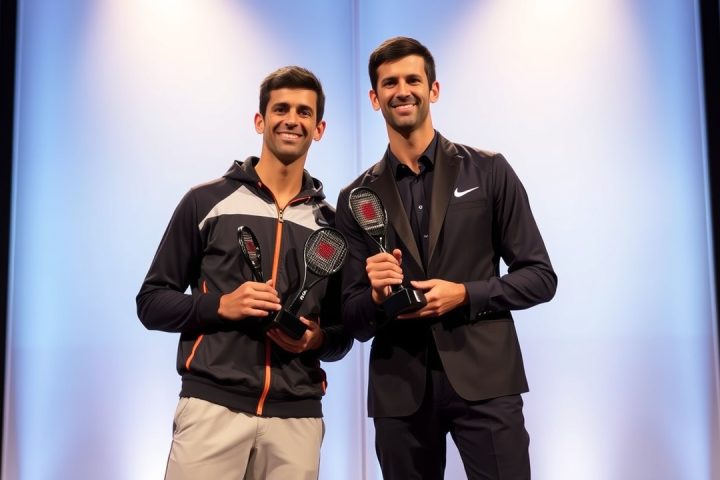Tennis Evolution: The Serve Bot Debate
LONDON – At the prestigious All England Club, Carlos Alcaraz has already claimed multiple accolades in his illustrious tennis career, but 2025 has seen him grappling with an unwanted label: the serve bot. This notion of a player who relies solely on their serve began to circulate when the 20-year-old Spaniard playfully questioned his identity by writing on a camera lens at the Australian Open,
“Am I a serve bot?”
after an impressive display of 14 aces against Yoshihito Nishioka. Subsequently, following his victory at the HSBC Championships in London last month, he remarked,
“I’m starting to think I’m a serve bot,”
further playing into the concept.
Beyond the Stereotype
Yet, during the initial rounds of Wimbledon, Alcaraz demonstrated that he surpasses the serve-bot stereotype. While his first serve fluctuated, his exceptional skills in groundstrokes, volleys, and court movement shone through, distinguishing him from typical serve bots. This term primarily denotes tall players like Americans John Isner and Croatia’s Ivo Karlović, who were seen as limited to unleashing powerful serves due to their towering heights.
Alcaraz’s embrace of this term reflects broader shifts within tennis itself. Notably, younger players are redefining what it means to be a serve bot, reveling in high-speed serve records while aspiring for monumental tournament victories. Furthermore, possessing a fast serve is no longer the definitive advantage it once was in men’s tennis, as the ability to return serves effectively has become increasingly vital.
The Modern Game
For instance, Giovanni Mpetshi Perricard, the towering 6-foot-8 French player, made headlines recently by recording the fastest serve in Wimbledon history at 153 miles per hour against Taylor Fritz. However, in an irony of the modern game, Fritz countered the serve and won the exchange, exemplifying that simply having a powerful serve isn’t enough. As the game evolves, it’s become clear that a strong return is what separates the best from the mediocre.
Isner, who has faced the serve bot label throughout his career, sought to define this term following his retirement. Together with fellow players, including Sam Querrey, Isner suggested that players who break serve fewer than 10 percent of the time fall into this category. Querrey explained,
“It’s more about how infrequently you break serve than it is how good you are at actual serving.”
Shifting Perspectives
This evolving understanding of serve bots indicates a significant shift in professional tennis. Exceptional servers like Roger Federer and Pete Sampras, who won a considerable percentage of both their service and return games, would never be labeled as serve bots, highlighting the absurdity of the term when applied to elite players. Currently, Alcaraz ranks 12th with an 86 percent win rate on service games, while top players like Jannik Sinner and Novak Djokovic excel in both departments, illustrating a game today where versatility is crucial.
Compared to previous eras, where a speed of 120 mph on serves was elite, today’s ATP players frequently achieve this benchmark, diminishing its uniqueness. Players like Mpetshi Perricard and Fritz have even taken to humorously embracing the term “bot” while recognizing they need diverse skill sets to compete effectively.
Embracing Versatility
Current players seem more willing to evolve from the outdated notion of a one-dimensional serve bot. For instance, Fritz has incorporated a greater variety to his game and no longer solely relies on his serving prowess. Meanwhile, Mpetshi Perricard, intent on improving his baseline game, has adopted a strategic approach, aiming for tiebreaks rather than just blasting serves from the line.
The term serve bot, once derogatory, is now frequently used in a more lighthearted context among players. They acknowledge its significance but aim to convey that today’s top competitors must display capabilities beyond just serving. The skillset required to succeed in tennis is rapidly expanding to include robust movement and return game.
Looking Ahead
As Alcaraz eyes a third consecutive Wimbledon title and seeks recognition as one of the all-time greats, he is keen to separate himself from the serve bot label that marred Isner’s and Karlović’s careers. Meanwhile, Mpetshi Perricard, just 21, exemplifies the potential to transcend the conventional serve bot definition whilst still honing the essential skills that underpin his game. While the traditional serve bot may be fading from the spotlight, the concept continues to evolve, remaining relevant in the sport’s lexicon.




